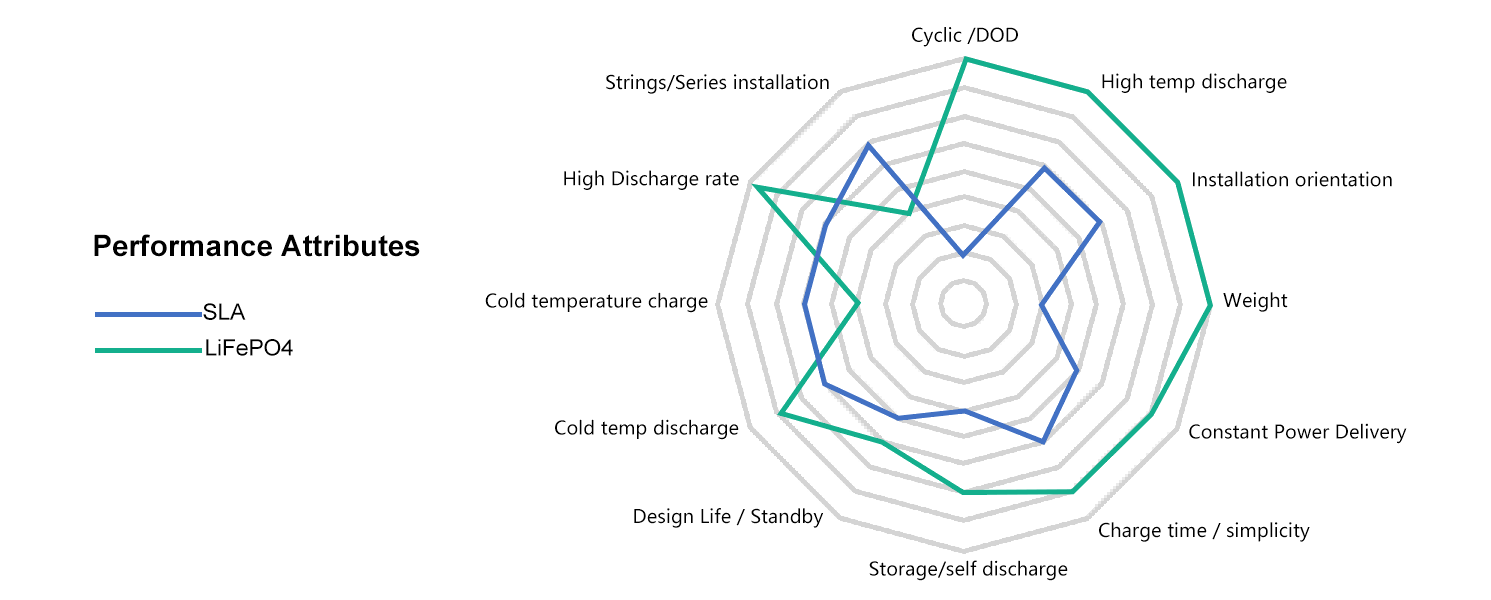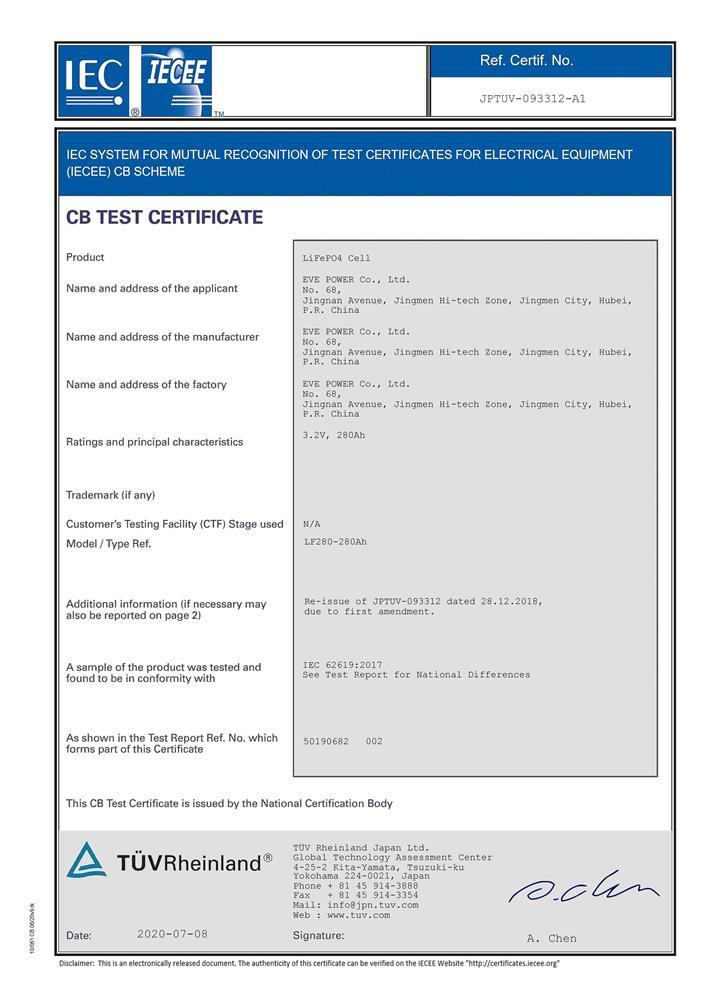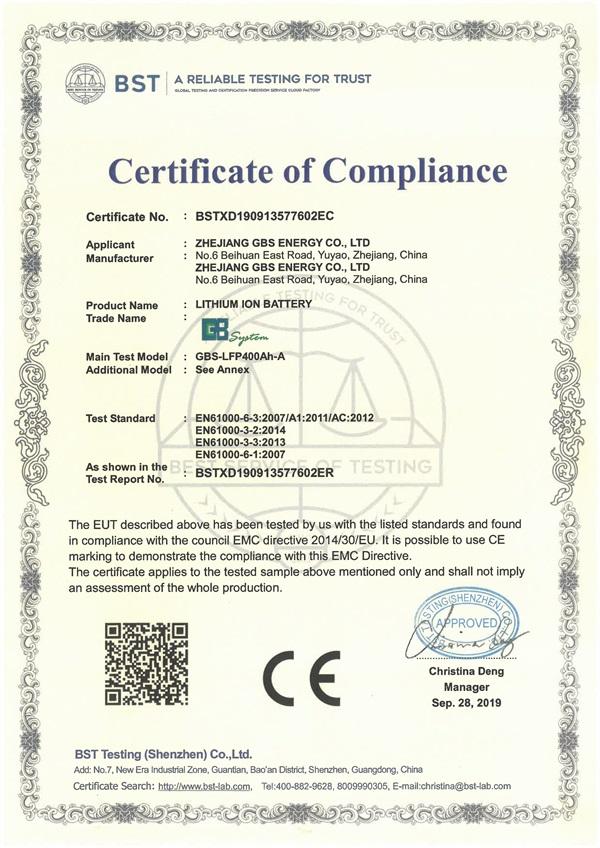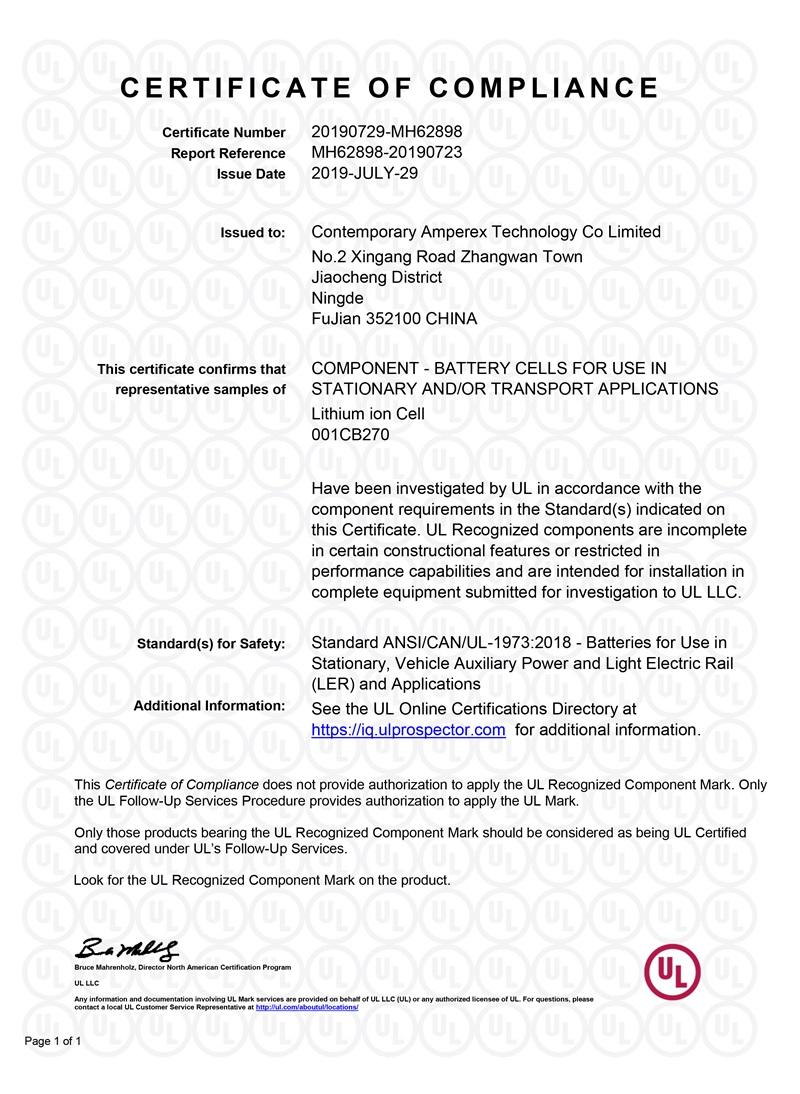Blog
Why LiFePO4 (LFP) Batteries Usually Outperform Sealed Lead-Acid (SLA)
2025-08-16 | Calvin

LiFePO4 batteries cost more up front but win over time — they give you higher usable capacity, far longer life, better efficiency, and less maintenance. Below I’ll break down the real differences (cost, capacity, efficiency, lifespan, safety, and environmental impact) so you can decide what’s best for your system.
1. Cost — upfront vs lifetime value
At first glance, sealed lead-acid (SLA) batteries look cheaper: lower sticker price and simple installation. But price alone is misleading. When you factor in usable capacity, replacement cycles, and efficiency, LiFePO4 often delivers a lower total cost of ownership (TCO) over its life. In short, you pay more now but likely save more later — fewer replacements, less wasted charge, and lower maintenance.
2. Capacity & energy density — more power in less space
LiFePO4 cells pack more usable energy into a smaller volume and weight than comparable SLA batteries. That means for the same physical footprint you get more runtime — handy if space or weight matters (e.g., boats, RVs, compact installations). This higher energy density also enables smaller system footprints and easier mounting.
3. Depth of Discharge (DoD) — use more of what you paid for
Depth of discharge indicates how much of the battery’s capacity you can use regularly. Lead-acid batteries are typically rated for a safe DoD around 50% — push beyond that and lifespan drops fast. LiFePO4 batteries commonly support 80–90% DoD without serious degradation, so your usable energy per cycle is far higher. That’s a real advantage: more usable kWh from the same nominal capacity.
4. Efficiency & charging — less energy lost
LiFePO4 batteries tend to be ~95% efficient or higher during charge/discharge, whereas lead-acid units often sit around 80–85%. Higher efficiency means faster charging, less energy wasted, and—importantly—fewer panels or less generator runtime to refill the battery after a drain. For solar systems, that efficiency difference directly cuts operating costs.
5. Lifespan & cycle life — how long will it last?
Cycle life is where LFP really shines. A quality LiFePO4 pack commonly delivers thousands of cycles (2,000–5,000+ depending on conditions and depth of discharge), while typical deep-cycle lead-acid batteries often manage only a few hundred to around 1,000 cycles. Translated: LiFePO4 often lasts far longer before replacement is needed, which again improves TCO.
6. Maintenance — practically zero vs regular checks
Lead-acid (especially flooded types) can require active maintenance: topping up distilled water, cleaning terminals, preventing sulfation, and ensuring ventilation. LiFePO4 is largely maintenance-free — most packs include an integrated BMS that handles cell balancing, temperature and voltage protections, and safety cutoffs. That’s a convenience and cost-saver.
7. Size, weight & installation flexibility
LiFePO4 batteries are much lighter and more compact than lead-acid equivalents for the same usable capacity. They’re also more flexible in mounting orientation (many LiFePO4 packs are safe to install on their side or upright), which simplifies system design. Less weight means easier handling and, in mobile uses, better efficiency.
8. Performance in temperature extremes
Lead-acid capacity drops sharply in cold and hot conditions; performance and life shorten outside optimal ranges. LiFePO4 holds up better across a wider temperature window, though extreme cold can still reduce charge acceptance and extreme heat affects lifetime. Proper system design (temperature management, BMS settings) helps maximize lifetime for either chemistry.
9. Safety — chemistry matters
LiFePO4 is among the safer lithium chemistries: it’s more thermally stable and less prone to thermal runaway than many other lithium types. That said, no battery is entirely risk-free — quality packs with a reliable BMS and proper installation are key. Lead-acid has hazards too (acid spills, hydrogen off-gassing in flooded types), which require ventilation and safe handling.
10. Environmental impact & recycling
Lead-acid batteries contain lead and sulfuric acid — toxic materials that pose environmental risks if not recycled properly. Fortunately, lead-acid recycling is an established industry with high recovery rates. LiFePO4 contains no lead or rare heavy metals, and while it’s cleaner in use, it still needs responsible recycling and compliant disposal. Both chemistries benefit from circular approaches and certified recycling channels.
Quick decision guide — Which should you pick?
- Choose LiFePO4 if: you want long life, higher usable capacity, lower maintenance, better efficiency, and smaller footprint — and you can accept a higher upfront cost for lower lifetime costs.
- Choose SLA if: initial budget is very tight, or you need the absolute lowest upfront purchase price and are OK with more maintenance and earlier replacement.
FAQ
Q1: Are LiFePO4 batteries safer than lead-acid?
A1: Generally yes—LFP chemistry is thermally stable and less prone to combustion than many other lithium chemistries; lead-acid has risks like acid spills and hydrogen gas in flooded types.
Q2: Do LiFePO4 batteries work in cold climates?
A2: They work better than lead-acid in many cold scenarios, but charging at very low temperatures may be limited; follow manufacturer guidance and BMS limits.
Q3: Is LiFePO4 always cheaper over time?
A3: Often yes on a lifecycle basis, thanks to deeper DoD, higher efficiency, and longer cycle life — but system specifics (usage pattern, system size, maintenance) influence final TCO.
- Next:LiFePO4 Pouch Cell vs. LiFePO4 Prismatic Cell: Which One Is Best for Your Application?
- Previous:Tesla Battery Types: A Simple Guide for Model S, 3, X, and Y
Contact Details
Lithium LiFePO4 Batteries and Lithium LiFePO4 Cells Supplier - LiFePO4 Battery Shop
Contact Person: Miss. Elena Wang
WhatsApp : +8615263269227
Skype : +8615263269227
WeChat :15263269227
Email : info@lifepo4batteryshop.com
All Products
- A123 Battery (5)
- Sinopoly Battery (7)
- GBS Battery (16)
- CALB Battery (22)
- Cylindrical Cell (3)
- Energy Storage System (0)
- Battery Management System (2)
- Sodium ion Battery Cell (3)
- Lithium Titanate Battery (16)
- Ternary Lithium Battery Cell (11)
- REPT Battery (8)
- BYD Battery (2)
- CATL Battery (14)
- Thunder Sky Winston Battery (21)
- EVE Battery (29)
- LiFePO4 Battery Cell (4)
Certification
Customer Reviews
- I have fond memories of our meeting in Shanghai with LiFePO4 Battery Shop Elena. Your company left a strong impression on me with its impressive growth and professionalism. We both value straightforwardness and honesty, which I believe are the most important qualities in any partnership. I am confident that we can build a successful collaboration based on these shared values. —— Robert from USA
- I've been working with LiFePO4 Battery Shop for years, and their reliability is unmatched. While other suppliers frequently change sales teams, LiFePO4 Battery Shop has consistently provided exceptional service with a stable team. Their commitment to quality and customer support truly sets them apart. —— Henry from Australia



